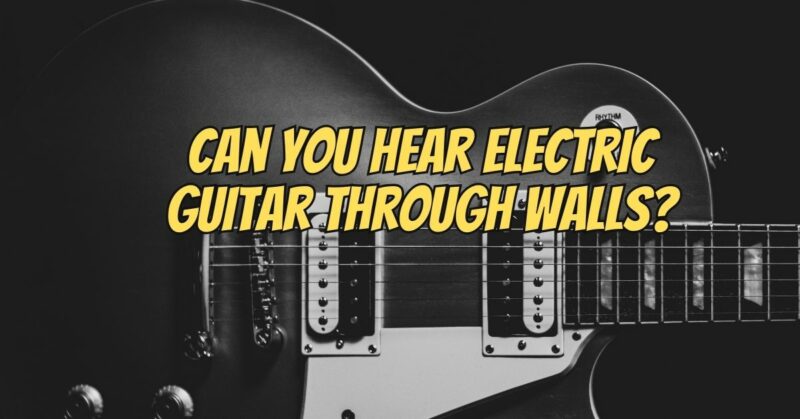Whether you can hear an electric guitar played through walls depends on several factors, including the thickness and construction of the walls, the volume at which the guitar is played, and the type of guitar and amplification used. Here are some considerations:
- Volume: The volume at which an electric guitar is played greatly influences whether it can be heard through walls. If the guitar is played at a low volume, it may not be audible through walls, especially if the walls are thick or well-insulated. However, playing at higher volumes increases the likelihood of the sound traveling through walls.
- Amplification: If the electric guitar is connected to an amplifier and played through loudspeakers, the sound is amplified and more likely to be heard through walls. The power and wattage of the amplifier also play a significant role in how far the sound can travel.
- Wall Thickness and Insulation: Thick, well-insulated walls are better at blocking sound transmission than thin or poorly insulated walls. Soundproofing measures, such as acoustic panels or insulation, can further reduce sound transmission.
- Room Placement: The location of the guitar amplifier within a room can affect how sound travels through walls. Placing the amplifier against an exterior wall may result in more sound transmission compared to placing it against an interior wall.
- Type of Guitar: Electric guitars equipped with single-coil pickups can sometimes pick up interference and produce a hum that may be more noticeable through walls. Guitars with humbucker pickups are generally less prone to this type of interference.
- Proximity to Walls: If the guitarist is playing very close to a wall, the sound may be more likely to transmit through the wall compared to playing farther away.
In summary, while it is possible for the sound of an electric guitar to be heard through walls, the extent to which it is audible depends on several factors, including volume, amplification, wall construction, and insulation. To minimize the sound transmission through walls, you can consider playing at lower volumes, using headphones, using soundproofing measures, or relocating your practice space to a quieter area within your home.

